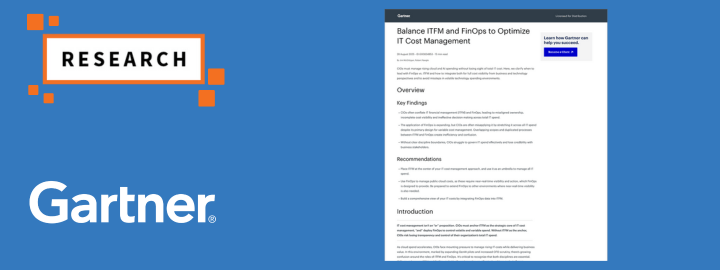Maximising ITFM Value: Turning Insights into Strategic Action

The Power of Data-Driven Decisions
At the core of ITFM maturity is using data not just for reporting but for strategic decisions. Once organisations understand their IT costs, they can pinpoint inefficiencies and areas for improvement. This calls for in-depth analysis of cost drivers, service performance, and resource usage.
Key Steps to Turn Data into Strategic ITFM Action:
- Focus on Cost Drivers: Analyse IT consumption patterns to ensure alignment with business needs. Are certain applications over-consuming resources? Are there more cost-effective alternatives, such as open-source or cloud-based solutions?
- Leverage Predictive Analytics: Forward-looking ITFM uses forecasting to model future costs. This helps anticipate budget overruns and optimise resource allocation before they occur.
- Drive Efficiency Through Automation: Tools like MagicOrange reduce the manual burden of cost allocation and reporting. Automation ensures accurate, real-time data, enabling IT and finance teams to focus on strategic outcomes.
Optimising Decision-Making with Cost Insight
Moving from transparency to optimisation is not just about cost-cutting—it’s about intelligent decision-making that preserves performance while eliminating waste.
Areas to Focus on for Cost Optimisation:
- Align IT Spend to Business Goals: Prioritise investments in high-impact areas such as key cloud initiatives while phasing out underperforming assets.
- Adopt Performance Metrics: Track KPIs such as cost per transaction or per service to measure and improve IT efficiency.
- Strategic Sourcing & Vendor Management: Optimise supplier contracts and relationships to reduce costs and improve service quality, using competitive bidding and SLA improvements.
From Showback to Chargeback: Driving Accountability
A key optimisation step is evolving from “showback” to “chargeback” models. While showback presents IT costs without financial impact, chargeback assigns real costs to the business units consuming those services. Implementing a PxQ (Price × Quantity) model ensures fairness and defensibility. Business units are incentivised to make smarter, cost-aware decisions, strengthening the alignment between IT services and business value.

Expert Insights from David Taylor
David Taylor is a seasoned IT Financial Management (ITFM) expert with over two decades of experience in aligning technology investments with business objectives. He has held pivotal roles in leading financial institutions, where he has successfully implemented ITFM frameworks that enhance cost transparency and optimise IT expenditures. David’s strategic approach integrates robust financial governance with structured data management, enabling organisations to make informed decisions and achieve long-term financial efficiency. His commitment to continuous improvement and innovation has established him as a trusted advisor in the ITFM domain.
Enabling Smarter Decisions Through ITFM Tools
Multi-Dimensional Cost Transparency
ITFM tools transform traditional financial views into service-oriented perspectives, offering a level of cost transparency that platforms like SAP and Oracle cannot match. These tools enable users to examine the same cost from multiple angles—by vendor, tower, service, application, or business unit—creating a single source of truth. This multi-view approach allows organisations to trace changes in IT spend all the way to profitability impact, supporting smarter, data-driven decisions about service quality and consumption.
Empowering Cost Influence and Accountability
By surfacing costs that individual teams can control, ITFM tools empower both IT and business users. Business units can manage what and how much they consume, while IT focuses on cost efficiency and supply-demand alignment. Waste is more easily identified and eliminated. Top-down mandates such as “reduce costs by 10%” can be translated into modelled scenarios with measurable outcomes. The PxQ (Price × Quantity) model further reinforces accountability, promoting more responsible consumption.
Replacing Spreadsheets with Automation
Accurately modelling Technology TCO requires more than spreadsheet expertise. ITFM tools automate sequential cost allocation and eliminate the complexity and opacity of Excel-driven models. By integrating with financial and operational data sources, they reduce manual effort, eliminate errors, and ensure consistency across the organisation.
Incorporating Budgets and Forecasts
Advanced ITFM implementations allow budgets and forecasts to be built directly into cost models. While this requires detailed data on both current costs and projected consumption—which many organisations still lack—doing so keeps financial planning aligned with operational reality and helps prevent budget overruns.
Benchmarking for Competitive Insight
ITFM tools support internal and external benchmarking, particularly when using standardised frameworks like TBM. Internally, they help assess the relative performance of services and flag inefficient or outdated offerings. Externally, they enable comparison against peers to highlight areas requiring optimisation or reinvestment.
Supporting Transformation Initiatives
Whether it’s application rationalisation, cloud migration, or broader technology transformation, ITFM tools provide the granular insights required to make informed investment decisions. They also support roadmap development for technology products and services, ensuring that transformation efforts are grounded in financial and operational reality.
None of the above can be accomplished with traditional ERP systems like SAP or Oracle. True ITFM requires specialised tools to achieve the detail, flexibility, and precision necessary for optimising technology investments.
Strategic ITFM: A Continuous Journey
True ITFM maturity is an ongoing process of evolution. As technologies shift and priorities change, so must your financial management practices. Continuous improvement in cost modelling, data governance, and decision-making frameworks ensures IT investment remains tightly aligned with business priorities.
Conclusion: ITFM as a Strategic Imperative
The shift from transparency to optimisation marks a critical turning point. When IT leaders embrace active decision-making, they unlock IT’s potential as a growth driver and strategic asset. For CIOs, CFOs and IT decision-makers, the message is clear: ITFM isn’t optional—it’s essential. Precision, insight, and adaptability turn ITFM into a source of competitive advantage.
Looking Ahead: Your ITFM Journey Continues
This may be the final instalment in our ITFM maturity series, but your journey is far from over.
Next Steps:
- Discover how MagicOrange turns financial insight into strategic value.
- Download this practical Gartner® Guide for ITFM practitioners: Simplify Your IT Cost Allocation Approach to Accelerate Time to Value
- Dive into PxQ chargeback modelling to see how transparent cost accountability transforms trust.
- Explore how industry leaders use automation, forecasting, and granular allocation to take control of IT spend.
When IT speaks the language of value, the business listens. Let MagicOrange help you lead that conversation.
Want To Learn More? Let’s Start A Conversation.


